

Let's talk about blogging.
Brands that blog regularly see ROI increases across the board, according to HubSpot's data.
But just having a blog on your website doesn't guarantee you ROI.
You can't just create a blog post and instantly gain thousands of conversions. It takes a bit of hard work and dedication before you'll be able to reap the rewards for your efforts.
Blogging requires strategy. It takes time. It takes patience.
It's an art.
But it's an art that's really good for business if you do it the right way — and if you measure your success.
Blogging means consistently improving your content to match exactly what your readers want to see.
Here's what to know if you want to use blogging to boost your brand power.
How to create a blogging strategy that builds your brandThere are a lot of reasons to start a blog. But the best reason among all of them is the ROI.
Companies who put blogging first see a huge payoff.
Marketers who prioritize blogging are 13 times more likely to achieve a positive ROI on their efforts.
And blogging can help overcome some of the biggest marketing challenges that both B2B and B2C brands face.


But the benefits don't stop there.
There are also SEO benefits to blogging.
Websites with a blog tend to have 434% more indexed pages, which is a key ranking factor for search engines like Google.
In one case study involving Denver-based entrepreneur Ben Walker, he used blogging as a way to dramatically improve his SEO:
"Since I started blogging, I've been able to use social media much more effectively to direct traffic to my site, which has improved my SEO and increased web inquiries by 75%," he said.
I guess what you really want to know is how to blog in a way that allows you to see those benefits yourself.
Cool. Let's get into it.
Here are a few of my favorite strategies to get you started.
1. Create a budget for your blogBefore you start putting pen to paper — or in this case, fingers to keyboard — you need a budget.
I don't mean a budget for only money.
Yes, blogging will probably cost you something, although it's a relatively cheap way to kick off your marketing efforts.
But you should also budget for time because time is really the resource you're going to need the most. It takes hours to craft a single blog post today.


Putting in the time to make your blog great will make all the difference in setting you apart from the competition.
Planning, writing, and setting up the content on your site is time-consuming.
So you're going to want a game plan before you dive right into it.
Most bloggers tend to write during business hours or in the evening, which can make balancing work and life with content production a challenge.

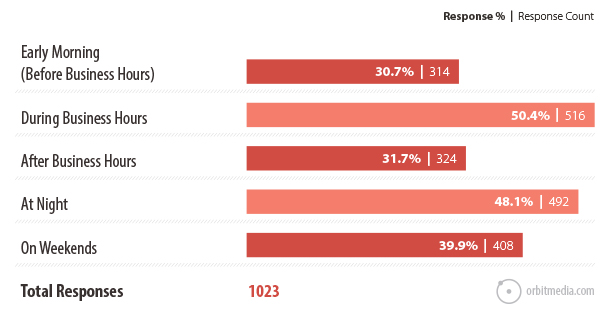
But you will also need to spend time marketing your content once it's published.
Otherwise, your readers may not know it's there. And you'll be passing up the chance to attract new readers by marketing your blog to people who haven't heard of you yet.
Of course, that means that there will be even more hours taken out of your day. But it's also money from your marketing budget.
Statistically, 32% of your marketing budget will go toward content marketing.

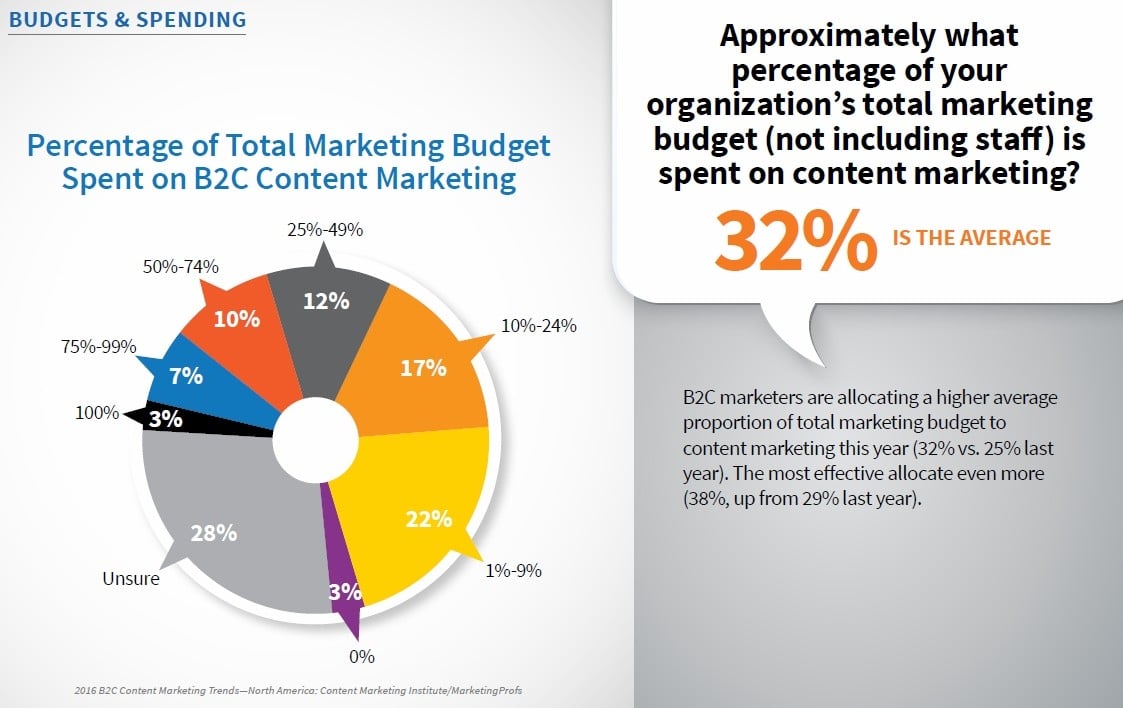
This number can be higher if you decide to outsource some of the writing process.
So, customize it toward your goals and needs. And keep a close watch on which kinds of top-performing content you can afford to put more money into.
You're most likely going to need to budget for the following (at the very least):
One last heads up on this topic.
Your budget will most likely rise over time, too. In fact, 51% of marketers plan to increase spending on content over the next year.
Not investing enough time or money from the very beginning can sabotage your results before you see them.
2. Define your core audience and their favorite marketing channelsOnce you've defined a budget and devised a plan, you're probably thinking it's time to sit down and write.
But you're still not ready to write quite yet. Sorry.
The next step in the process is more research.
You want to define your target audience, so you know how to plan for topics, what content will be impactful, and which marketing channels will have the best reach.


Otherwise, you'll be wasting your time writing content that your readers may not even want. Which doesn't exactly help you out with building your brand.
Your target audience will be made up of the following types of people:
When it comes to blogging, people aren't necessarily paying you in the literal sense.
Your content isn't necessarily for direct selling. But your brand will make you money.
Content will build your brand's reputation. People will see you have something of value. And then people will convert. Boom. Money.
So when you're defining your target audience, you want to focus on those specific buyer personas who will convert.

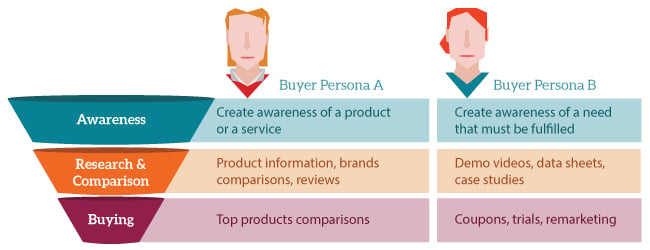
Some people will convert because of their longing for knowledge, like wanting to know more about a solution to a problem.
You blog about that problem. They see you have knowledge. They become a supporter.
Some people will convert through comparisons.
If you write content that reviews other brands in your industry, they'll come knocking. If they like what they see, they'll buy.
Understanding your audience is essential to developing your content strategy.
Start with your audience personas before you start creating content. That way, there won't be any guesswork about what kinds of content will actually get your audience to react.
3. Define the goals of your content strategyI know you're itching to start brainstorming content ideas.
But there's one more step to cover.
Before you dive into the creation process, you have to define your content goals.
What is it that you want to see your content do? What do you want your writing to achieve?
Is your aim to raise brand awareness? Increase sales among your supporters? Better engage with loyal customers?
"ROI" is a vague term. You need to be specific.
Start by creating a persona of your ideal supporter:
Once you've created a persona, you can start focusing your goals to fit those personas. Use them to your advantage.
If your goal is conversions, you might want to target audiences that are in the final stage of the buying cycle, for example.

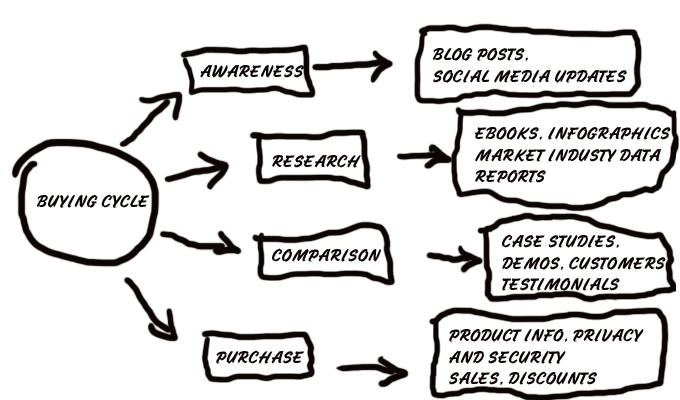
Maybe they have questions about your products or services because they have an immediate need.
They might be searching for reviews, comparisons, or knowledge about a specific topic.
You can create content that targets these variables.
Find out what immediate needs your audience has, and write about them.
If your goal is simply to raise brand awareness, on the other hand, you might just write content that speaks to pain points in your industry.
That way, you'll become a trustworthy voice and a source of reliable information for readers.
Define your goals and create an audience persona that matches.
Then you can start dreaming up content.
4. Brainstorm brand-relevant contentNow comes the fun part.
Just because you're interested in certain types of content doesn't mean your audience will be.
Which is why it's good that we've already defined our audience by this point. (It's like I've been doing this for a while or something.)
There are many different types of content you can post on your blog.

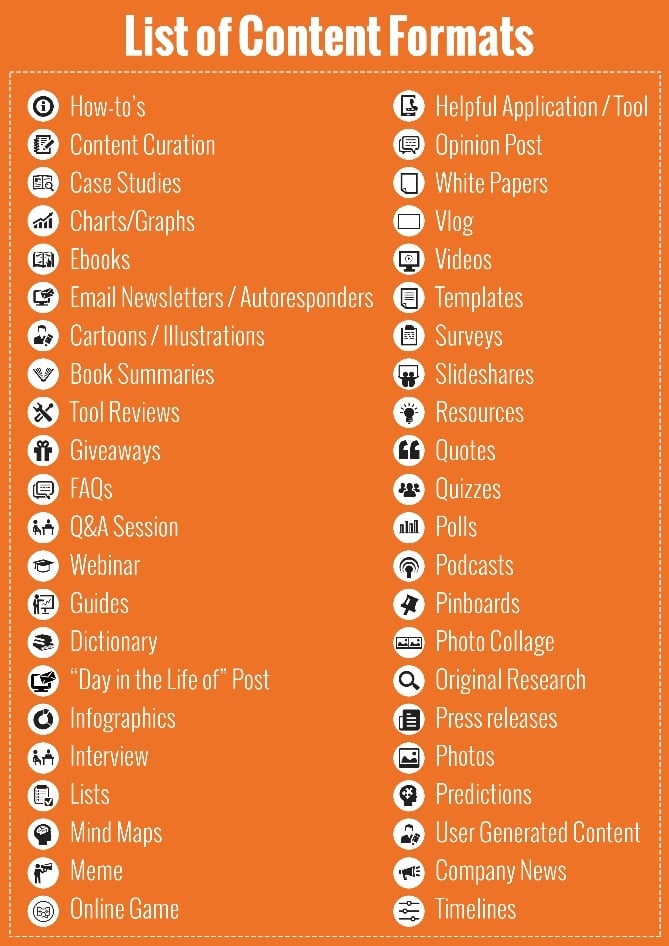
So again, you want to look at what's going to be the most relevant to your audience.
Here are a few core concepts to keep in mind.
1. Providing actionable solutions for your audience
What constitutes actionable?

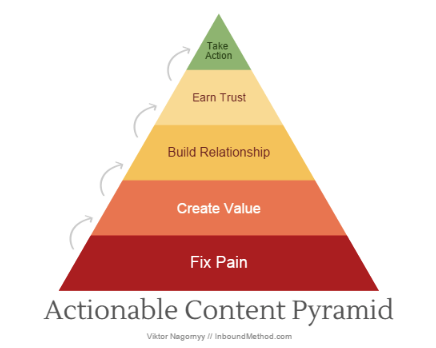
Typically, actionable content lets the audience walk away with a key lesson or some habit or practice they can put to the test.
This could be tips, or a how-to guide, or even something like this blog post with steps to follow.
Actionable content solves your audience's most pressing problems. They'll appreciate the advice and remember you because of how your content helped them make their life better.
And they'll keep coming back to your content every time they have a problem.
2. Being knowledgeable about your industry
Here's the thing. You don't have to know everything to be a blogger. I certainly don't.
But I know enough about my industry and my audience to talk to them knowledgeably.
If you don't have the knowledge to communicate something clearly, find an expert who does and have them guest post.
This is your best bet when you want to post about a topic that you may not know a whole lot about.
You could also guest post on other sites for a little brand recognition. You might be knowledgeable about a topic that another brand isn't.
That means you can appeal to a whole new customer base by presenting yourself (and your knowledge) to another brand's readers.
https://youtu.be/Ti82laVS29I
3. Being clear about your brand's message
Why are you blogging?


I'm not trying to discourage you here. I'm trying to get you to think about your deeper purpose.
Blogging to build your brand is one thing. But having a deeper motivation can help your readers rally around you.
It's not just about measuring ROI or reaching conversion goals. What are you trying to say?
You've got to really define your message here. What do you want the key takeaway of your blog to be?
Do you love it when people grow their business because of your advice? Do you like getting to teach or train others to do what you do? Or do you just love writing?
Whatever your message (read: mission) is, let it shine through in all your content.
People will respond when you're getting it right.
4. Choosing your brand's "tone of voice"
I have a very specific style of writing. Most people who come here are getting the "Neil Patel experience."
You also need a brand experience and a tone. You need a voice.


And all of your writing should be consistent with that tone across every channel.
That means in your blog posts, in your social media posts, and even in your PPC ads.
You want readers to recognize you and your brand by your unique voice. You don't want them to read something and think it doesn't fit in with the overall style of your company.
Building a brand is about people getting to know you and your way of doing things. So don't be shy about developing a style.
Just be you. Your authenticity will pay off. People who buy into it will seek it out from all the other faceless, nameless blogs out there.
5. Choose your measurement metricsOK. Here we are. We've made it to the final step: measuring ROI.
You've gone through all the trouble of setting goals. So now you need to know whether you've achieved them, or if you're falling short.
That way, you can gauge whether to keep doing what you're doing or take a step back and come up with a game plan for improvement.
There are a few ways you can track success.
1. Engagement
Engagement metrics might include things like the total number of comments on your blog, the number of shares, bounce rates, or links, plus mentions on other blogs.


Nobody can really define what engagement looks like to you, though.
There are plenty of very specific metrics you can measure, so decide on one or two that line up with your goals.
Google Analytics should be enough to help you track these metrics.
2. Distribution
How many people are viewing your content on the channels you want them to? Who is viewing it? Do you see high enough CTRs to your website?
For example, if your goal is brand awareness, you should be tracking CTR.


What is the total number of people clicking on your CTA? Who are they? What additional information is your target audience searching for?
You should also track which landing pages get the most clicks and which aren't performing so well.
3. Conversions and sales
If your goal is to convert, you should track sales.
With blogging, you're not always going to see a direct "reader-to-customer" transition.
They might start out as a follower. You might just have their email address. But with other marketing strategies, you can eventually woo them into becoming a paying customer.
If the amount of marketing you're doing is increasing (including your content marketing), your sales should be going up.
Look at your conversion rates. Again, Google Analytics is your best friend for this one.
You should be able to set goals directly in Google Analytics, so tracking these metrics should be fairly straightforward.
If you have another CRM or sales software, you can track it there, too.
In summary, if your business is growing, you're probably doing something right.
If it's still stagnant and you've been blogging for a while, make sure you're not making any of these common blogging mistakes.
If you find that you are, fix them.
Otherwise, just keep doing your thing, and the ROI will come.
ConclusionBlogging to build your brand is a great idea. I highly recommend it.
But there are a few things you need to get squared away before you start the writing process.
First thing's first, you have to budget. I don't just mean money. Although, you'll probably need that, too.
I also mean time. This will take up a lot of it, but the payout will be worth it.
You need to define your goals. You need to define your audience. And you need to define your audience's goals.
Come up with relevant content that solves problems for readers or gives them industry insight.
You need a clear picture as to why you're doing what you're doing. And then you need content that communicates it clearly with a great brand message.
Be sure to choose a tone of voice and stick with it in the process, too. Be authentic across all channels so readers will trust in what you have to say.
And finally, you need a way to measure all that success you're going to see so you can identify any mistakes and make improvements.
Get all that done, and you can master blogging — no problem.
Which blogging techniques have you used to build your brand?
Source: How to Create a Brand-Building Blogging Strategy
No comments:
Post a Comment